The Sustenance of Space
An Exploration of NASA’s Plant Programs
Part 2
Editor’s Note
Space may be the final frontier, but we rarely imagine it associated with dining—or perhaps with eating at all. Of course, it is one of the many considerations NASA researchers have on their minds, thankfully for those who need to be fed on their missions. The Life & Thyme editorial team was welcomed to the Kennedy Space Center where researchers are exploring exactly that. Today is the second installment in a three-part series about the organization’s efforts to that end, as well as growing food in orbit and on Mars. Click here for Part 1.
Words by GIA HUGHES
Photography by ANTONIO DIAZ
Videography by AUSTIN STRAUB
There’s a particular type of silence that accompanies awe. It’s as if you can feel the weight of its gravity on your shoulders and on your mind. We step out of the International Space Station Environmental Simulator Room, the chamber in which Advanced Plant Habitat (APH) is located, attempting to register the magnitude of what they are trying to accomplish here at NASA’s Kennedy Space Center—bioscience research on the International Space Station (ISS), not to mention a potentially integral step in the journey of food production on the way to and on the surface of Mars. Each of us on the Life & Thyme team has that long-distance stare in our eyes while we mull over what we have just learned.
Minutes later, several scientists usher into the room, donning lab coats and fresh gloves. We position our view toward a white standalone growth chamber—a unit that controls environmental parameters, such as carbon dioxide and temperature. This is where the plants studied in the APEX-06 experiment are stored.
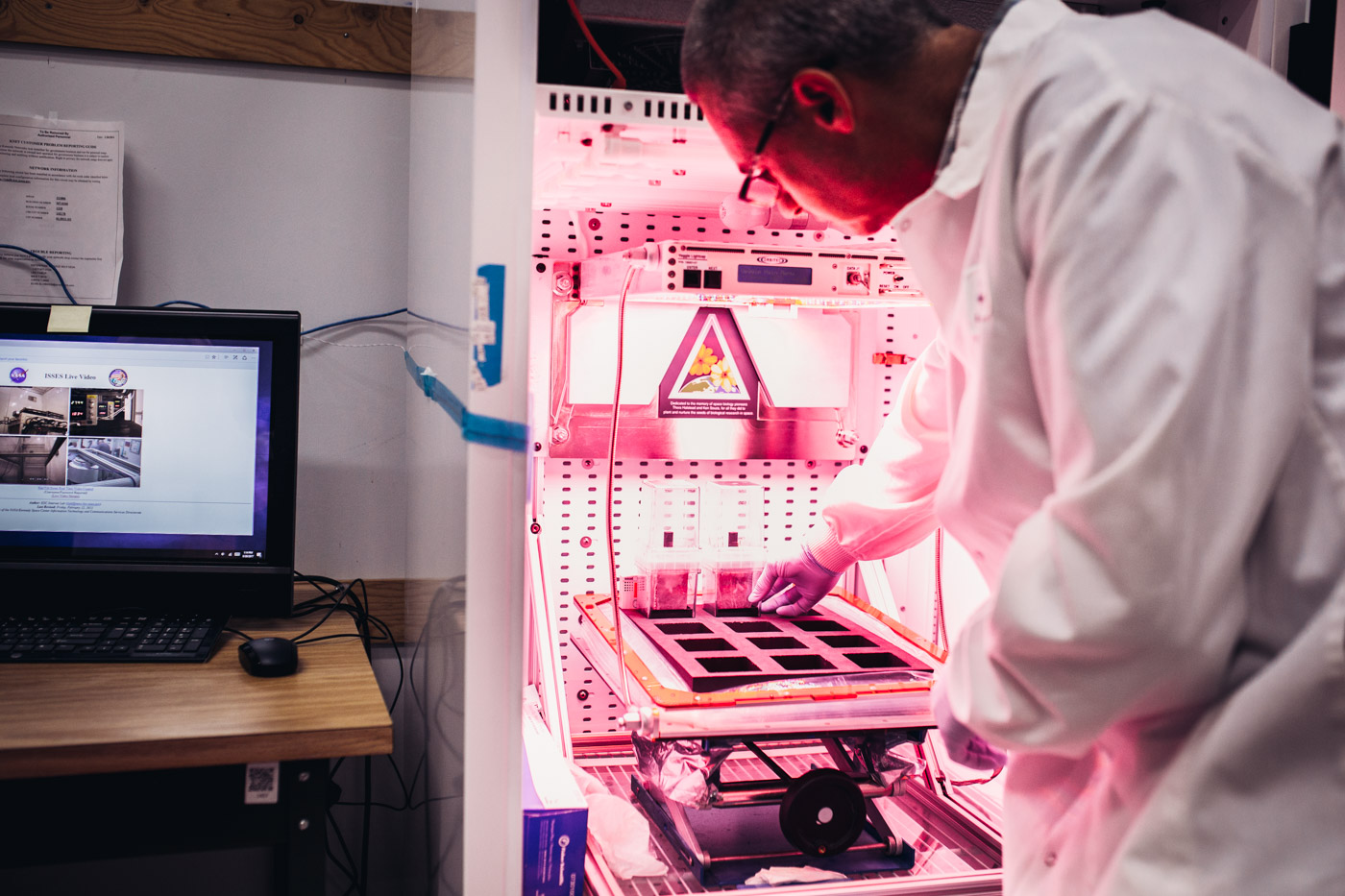
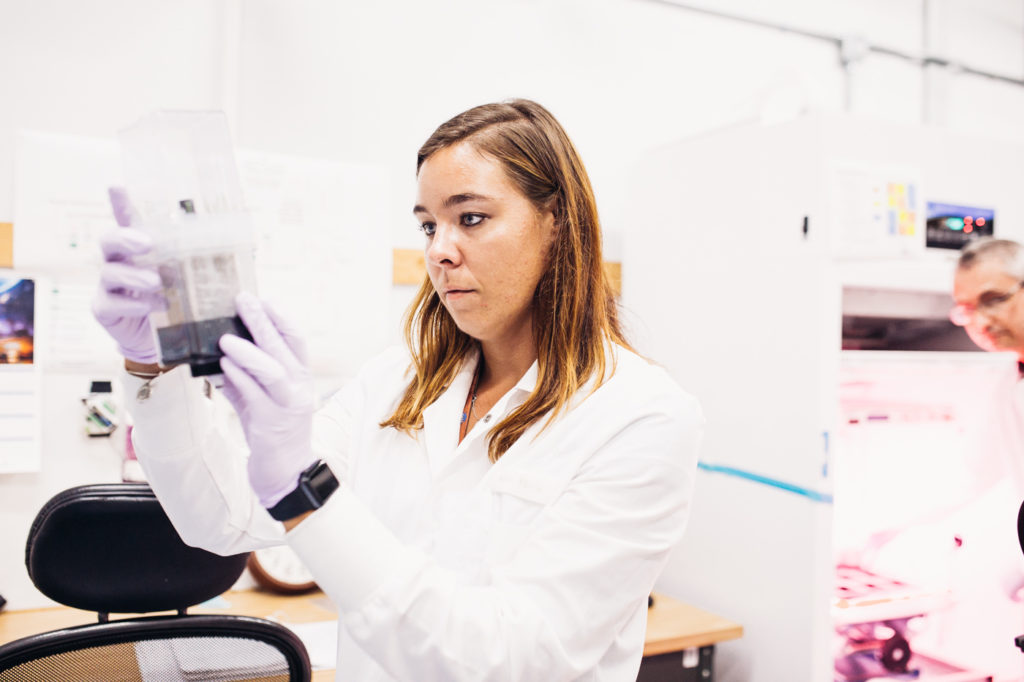

APEX-06
We are here to watch the transfer of plants from this chamber to another laboratory via wheeled cart—the first scientist methodically handing off each plant to another pair of gloved hands. This process is called the “harvest.”
We then meet Nicole Dufour, NASA Project Manager for Veggie and APEX-06. APEX-06 (Advanced Plant EXperiment) is the sixth iteration of this particular payload mine and an experiment by Dr. Patrick Masson from University of Wisconsin, Madison. “This particular APEX experiment relates directly to food production,” she says. During our visit, the APEX team is studying brachypodium. They will be sending this monocot plant sample (which is what brachypodium is classified as: a flowering plant with seeds containing one embryonic leaf) to the International Space Station (ISS); other monocots, like wheat, rice and barley have already been grown in past experiments.
The APEX scientists have devised a new way to grow brachypodium in space, and are now sending their plant samples dry. “This particular setup is a different way of growing plants than we have used in other APEX experiments,” says Dufour.
Previously, APEX had been focused on dicot plant samples, such as arabidopsis thaliana. These plants used to be sent via small petri dishes plated in a wet growth media known as agar. “These brachypodium get too wet in this agar media and start growing right way, so that was not a suitable way to send these plants,” Dufour explains. Now, once the plant samples reach the ISS, the crew will add water, this way the seeds will have a prolonged shelf life.
Several scientists assemble around the harvest, tweezers and magnifying glasses in hand. “We are looking for uniformity in size between each jar,” Dufour says, the jars consisting of green stems, leaves, and roots snaking down the interior of the foam- and gauze-filled glass. All plants should be exhibiting the same type of growth behavior. Today, they’re trying to figure out why several plants are not growing as much as they should be. They’re also assuring the root structure doesn’t grow so long that it hits the base of the jar. “Like a tree that’s next to your house, it starts bending the root. Once you start doing that, you’re losing your science,” explains Shawn Stephens, APEX Project Lead, as we gather around the table, examining the scientists examining the plants.
Along with the potential of food production in space, the APEX-06 project is studying how plants respond to microgravity during space flight. The scientists have chosen these particular monocots because they closely resemble grain-type crops. “Their general response to space flight will give us an insight into food production for the future,” Dufour tells me.
“In microgravity for food production purposes, we found the most challenging piece of the equation is the water management system,” says Dufour. “Water behaves substantially differently in microgravity versus on earth—especially the way water interacts with air.” Another effect of microgravity is its effect on the root curvature and how the roots diverge. By anticipating how to properly grow the plants in microgravity, the APEX project is integral to the understanding of how to properly produce food in space, whether this will be on the ISS, a long-duration flight, or potentially on another planet.
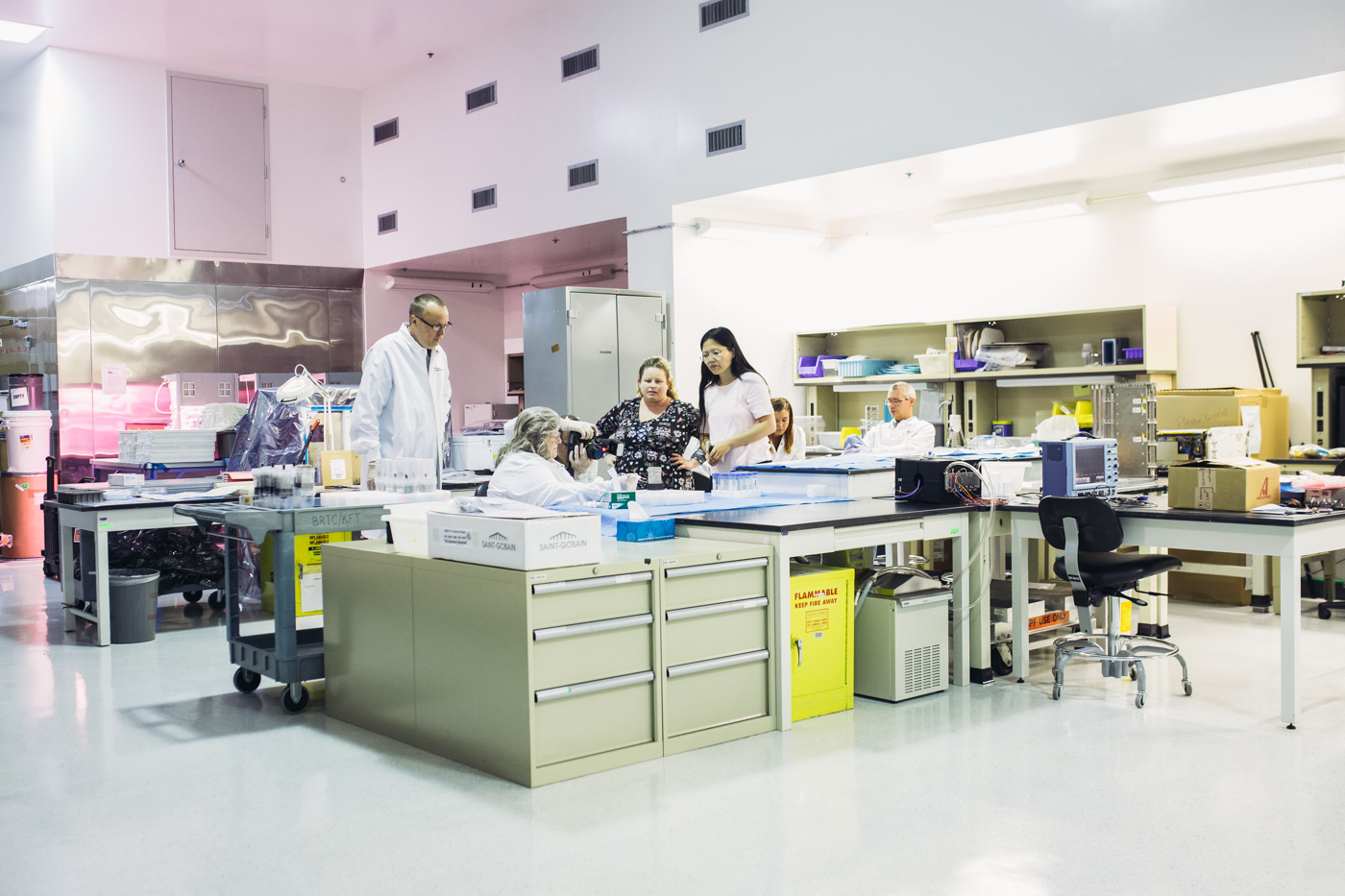
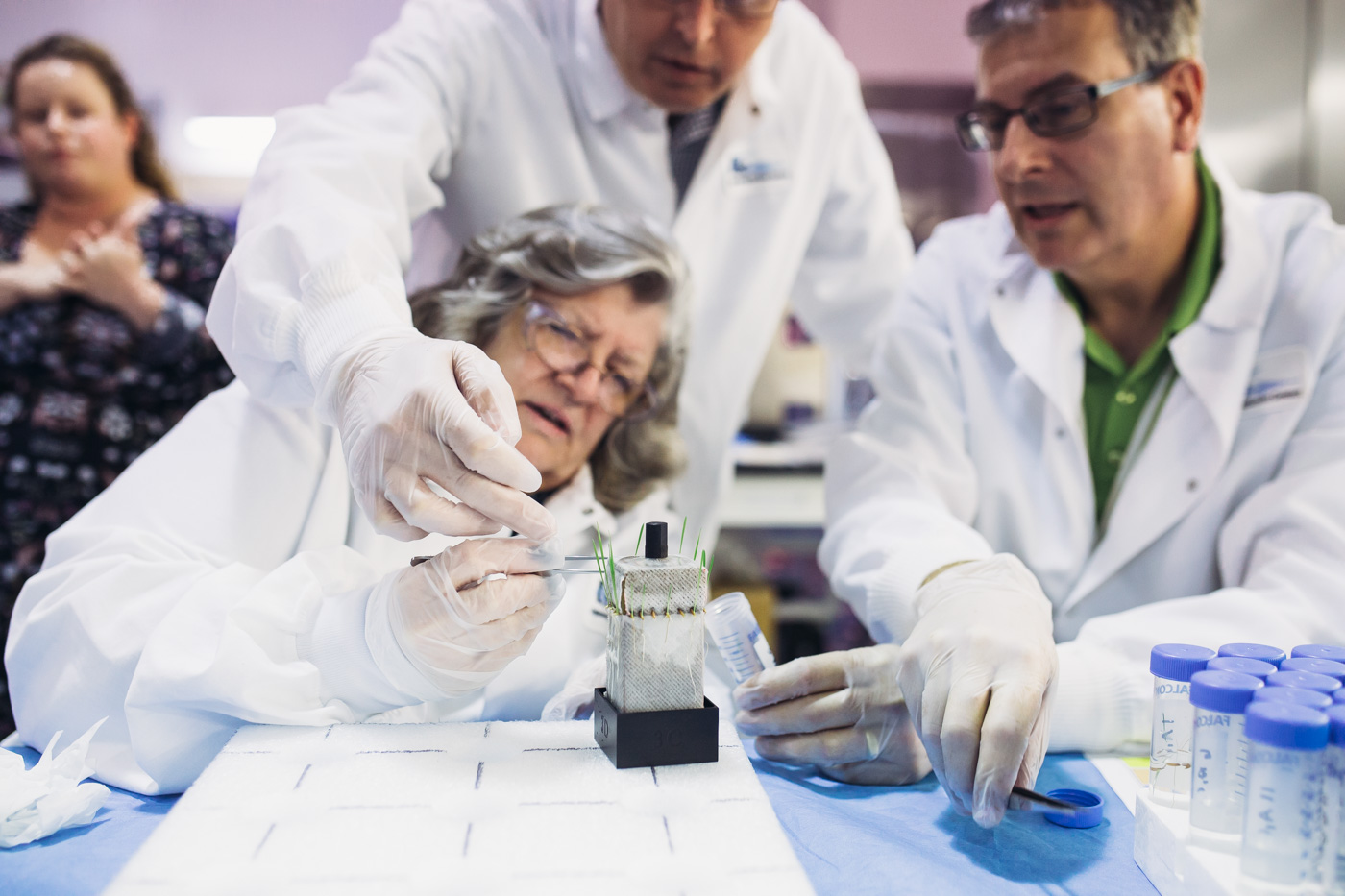
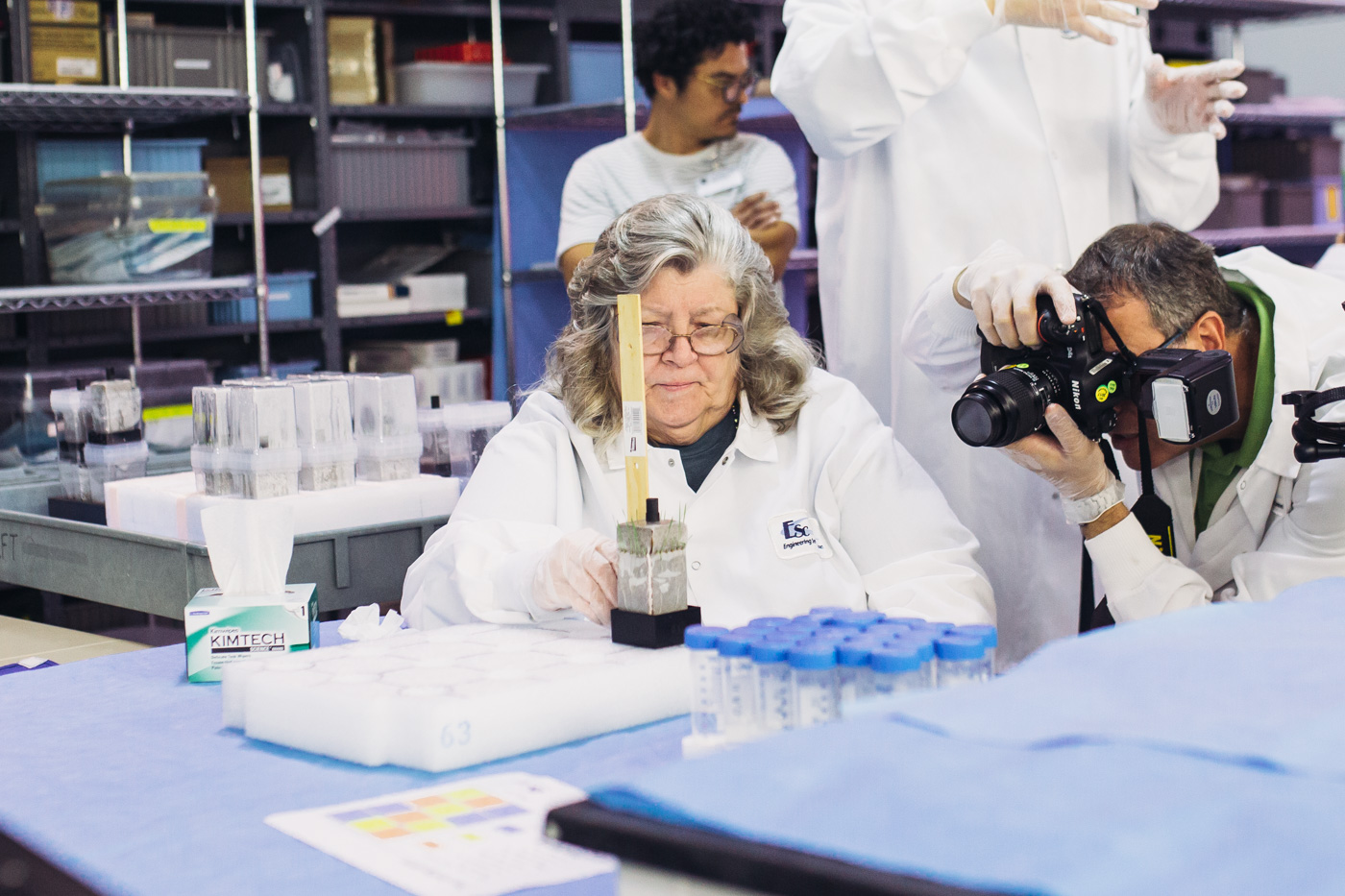
In terms of food production for the crew in spaceflight, APEX-06 can grow these monocots in the lab and study their yield. The first room we entered at the NASA facility, Advanced Plant Habitat, is essentially a means of taking projects like APEX-06 to the next level. In the long term, experiments like APH, APEX-06, Veggie, and Long Duration all work in conjunction in the discovery of how to send plants to space, how to grow and sustain plant life in space, and ultimately how to grow plants on the surface of Mars.
Veggie
“It was a wonderful sense of jubilation and relief,” Gioia Massa, Life Sciences Project Scientist at Kennedy Space Center, describes how she felt when the astronauts first ate her plants on the International Space Station. Veggie is NASA’s program in which astronauts can move beyond mere research and eat the food grown in space.
They are growing three crops in Veggie while we are on site: “Mizuna, which is an Asian green—slightly spicy flavor, really delicious, a little bit peppery,” describes Massa. They are also growing outredgeous red romaine lettuce. The romaine has been grown on the ISS three times, and consumed by the astronauts twice; the first harvest was in 2014. “In 2015, they actually harvested it and ate it,” Massa says. The third is Waldmann’s green lettuce, which has yet to be grown in space. This is the first time mizuna and Waldmann’s green lettuce are grown via the Veggie experiment. “This is a mixed cropping scenario in Veggie,” says Massa. “And this will be the first time we actually do that on orbit.” They are particularly working on VEG-03D while we are on site; Veggie is currently working on another mixed cropping as VEG-03E and F grow, Massa explains.
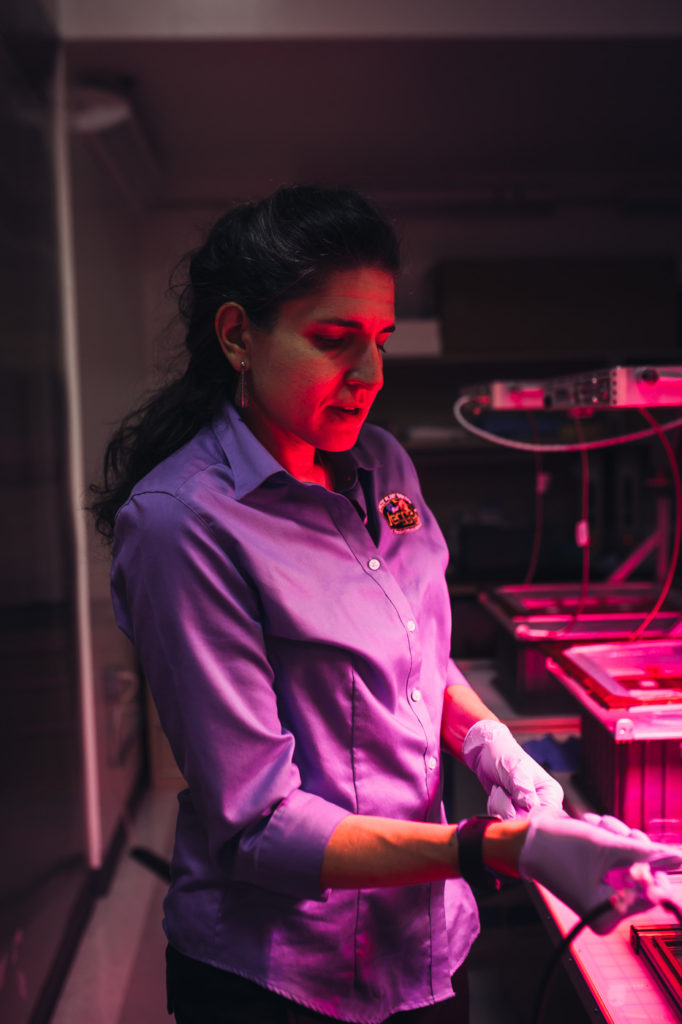
Veggie recently sent several pillows—a contained means of growing these plants in space—to the ISS. Each pillow contains an irrigation ring through which water is fed, and Arcillite—a type of baked clay, similar to what is found on baseball fields—mixed in with “a controlled release polymer of coated fertilizer,” Massa explains, so the plants can receive the nutrients they need. “This baked clay is a kind of charged substrate. It helps hold water and air in the root zone,” Massa continues. “We will sew them shut, package them up, and we launch them to the space station dry.” Once they get to the ISS, the astronauts add water, thus allowing the seeds inside to begin to grow.
The Veggie program originally began as a small business innovative research grant from NASA to ORBITEC (Orbital Technologies Corporation, located in Madison, Wisconsin), which was purchased by the Sierra Nevada Corporation. To the layman, it’s a small payload structure enclosed in a Teflon-like wrapping held to the top by magnets. The sides are collapsible so scientists and astronauts can easily water their plants.
Over the last several years, Veggie and NASA have also been working with the Fairchild Tropical Botanic Gardens in Miami where they have an education and outreach program known as the Fairchild Challenge. NASA has helped the program design experiments; for example, the Fairchild Challenge has placed 131 small botany racks in various middle school and high school classrooms. “It’s Veggie on a budget for classrooms,” Massa says.
“We are going to be continuing that collaboration in the future and see how many other things the students can help us learn about,” Massa continues. “Things like failure analysis, what happens if the astronauts don’t get to water the plants in time, and how quickly they recover.”
Another goal of Veggie is to encourage astronauts to garden while testing out new crops on the International Space Station, the fruits of their labor they can later eat. “We will be doing taste tests on orbit. We are very excited about that,” says Massa. They will also be testing how the ISS environment might impact the plant microbial and nutrient levels—this is essentially how bacterium from the space station and its astronauts might interact and affect the plant’s health.
According to Massa, there are five cardinal factors of plant growth: light, temperature, atmosphere, moisture and nutrients. Like APH, Veggie requires particular lighting—blue, to orient the plant skyward in an environment without gravity, and green, “for being able to view the plants diagnosed disorders, and have the psychological benefit of having something green and growing in microgravity,” Massa explains.
After much testing, particular plants are chosen that must meet certain requirements: they must grow well in containers, they must be able to grow under certain temperatures and levels of humidity, and they must be tolerant of high levels of carbon dioxide. Intermittently, plant samples are harvested and shipped to a food taste lab at Johnson Space Center in Houston, Texas. Volunteers taste and rate the produce on such factors as flavor, smell, texture and color. Veggie then takes that data and ranks the crops for flight selection.
The Veggie program is looking for plants with interesting flavors and textures to potentially add to the astronauts’ diets, like mizuna. “In space, you have what is called ‘fluid shift.’ Your heart is trying to pump the blood up from your feet, but gravity is not pulling it back down,” Massa explains. This fluid shift essentially mimics the symptoms of a cold—a puffy face and a numbed sense of taste and smell. “They use a lot of Tabasco sauce, salsa, or sriracha up there because they want that added spiciness so they can actually taste it,” she says of the astronauts on orbit.
It’s crucial to provide plants the astronauts are going to be able to consume as well as enjoy. “Currently, they have a pretty impressive diet. I believe there are hundreds of foods that get packaged and prepared at Johnson Space Center where the food lab is located,” says Massa. Most of these foods are dehydrated or “thermo-stabilized” because there is no substantial way to cook in space. “We’ve predominantly been focusing on fresh vegetables you can pick and eat with minimal processing. It’s not going to be easy to prepare food, especially not without gravity.” With the food they can currently grow on the ISS, the astronauts typically eat the lettuce leaves plain or like a tortilla to make a wrap. It provides freshness typically lacking to the diet.
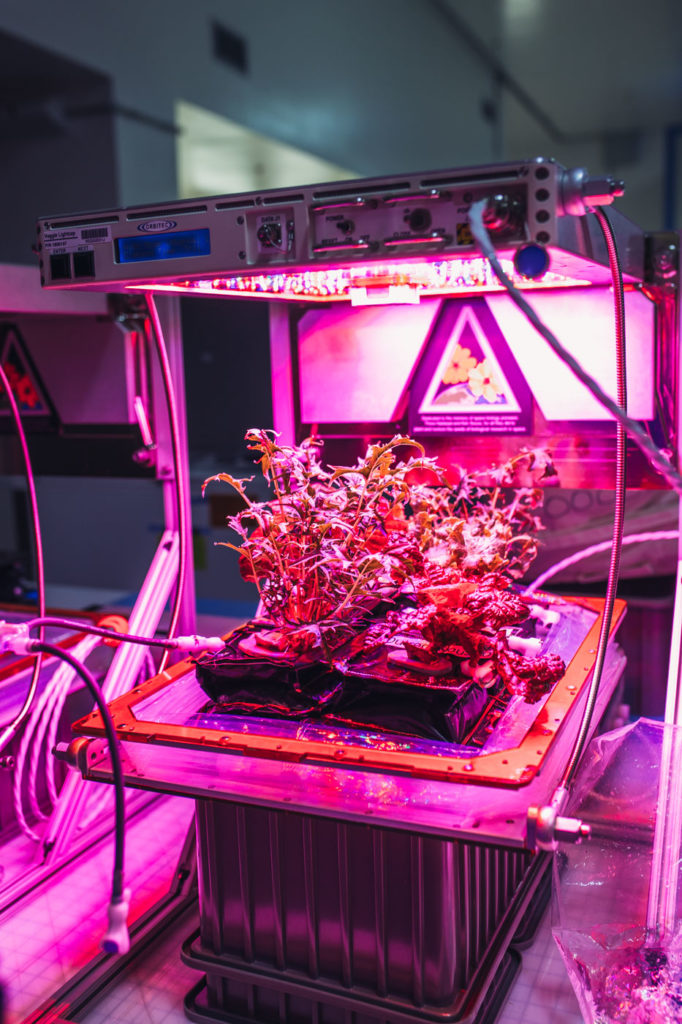
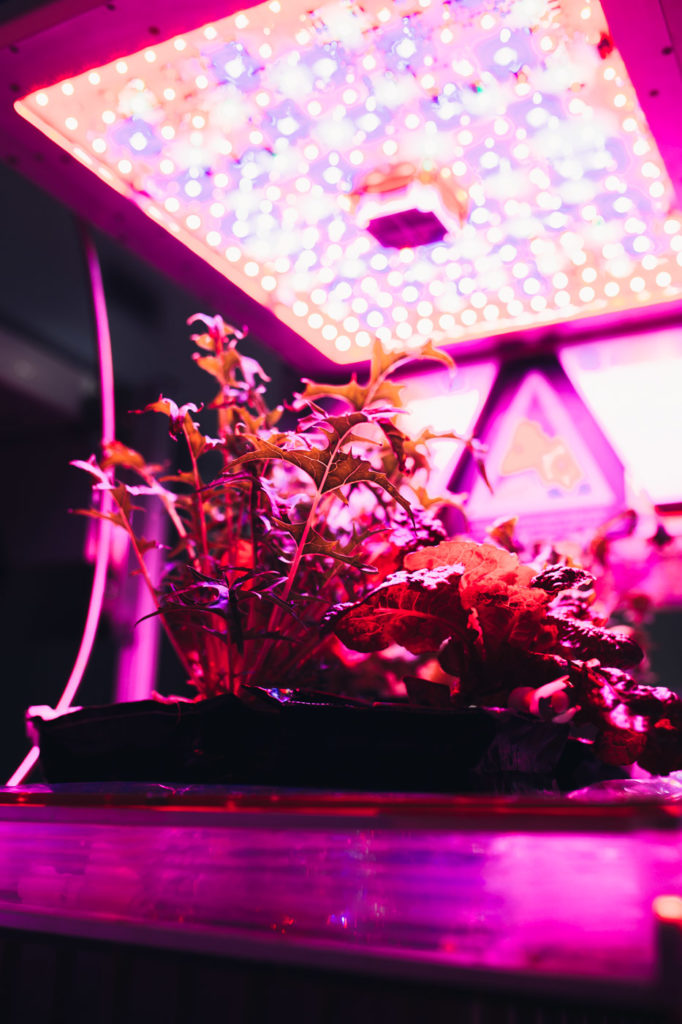
In the near term, Veggie is not looking to heavily experiment on staple crops, like wheat, rice and soybeans. “All of those are potentials, but they require a lot of processing equipment, a lot of labor, and a lot of cooking equipment. You would need you flour mill, your bread machines, your tofu presses,” says Massa. Until NASA is closer to having a permanent base on Mars, Veggie will likely be growing mostly fresh produce—pick-and-eat crops, as Massa refers to them.
Currently, astronauts are shipped fresh fruits and vegetables—foods that require little or no refrigeration, like carrots, apples and oranges. But the supply is limited and they are eaten quickly. Veggie wants to provide the ability to have fresh produce consistently be a part of the astronauts’ diets, “Not once or every two or three months when a supply ship docks,” says Massa. “We would like to get to the point where they are regularly picking and eating leafy greens, fresh tomatoes, maybe some herbs they could add to their packaged produce like basil or chives, dwarf peppers, and possibly radishes.”
Astronauts on the ISS are living in a highly stressful, sterile environment. “When you look at the space station, it’s all boxes and cables and wires and plastic and metal,” says Massa. “Having something green and growing could be tremendously psychologically beneficial to them,” she says.
And they will be collecting data on that. “We’ll have crewmembers willing to do some questionnaires about how the plants make them feel or how their mood might be changed by having the plants around, and by tending to the plants. That may be almost as important as the food component at this point, especially when you’re on your way to Mars,” says Massa. It will be, after all, a very long flight. And the voyaging astronauts will need stamina, motivation and morale however they can get it.
“On the space station, they have sunrise and sunset every ninety minutes. It’s really easy to lose track of what day you are on,” she continues. But if you can monitor the growth of a plant every day, if you can anticipate the ripening of a fruit or vegetable so you can eat it, it can keep you grounded in reality.
“All of these things can be really important for the crew. When they go to Mars, they aren’t going to have any sunrises and sunsets—at least until they get there,” says Massa. “That will also be a very important aspect—to have something green and growing as a reminder of home to them. That’s always in my mind.”
They’re a reminder of what every human needs—a little sustenance and something to care for, especially when you’re a long way from home.






Our comments section is for members only.
Join today to gain exclusive access.